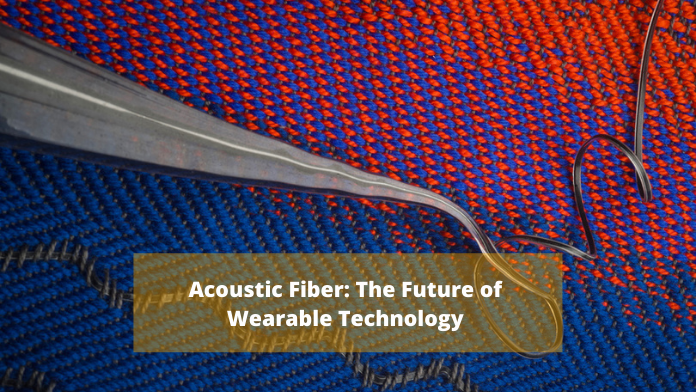Imagine being able to answer your phone with your shirt, turn up the volume with your pants, and a host of other things just with your clothes? A few years back this may have seemed impossible. But with the invention of “acoustic fiber”, scientists are reimagining clothing as a means of communication by pushing the boundaries of wearable technology beyond the realms of smartwatches and fitness bands.
Clothes made of acoustic fiber could monitor heart rate continuously by picking vibrations on our skin, give us the option to answer phone calls and communicate with our garb, and also function as a hearing aid for those with impaired hearing to navigate noisy surroundings.
In addition, the fabric “can be integrated with spacecraft skin to listen to [accumulating] space dust or embedded into buildings to detect cracks or strains,” Wei Yan, an assistant professor at Nanyang Technological University in Singapore and lead author of a study on the cloth published Wednesday in the journal Nature, said in a statement. “It can even be woven into a smart net to monitor fish in the ocean.”
Here’s how the new acoustic fiber technology works:
A flexible fiber made of piezoelectric material that is receptive to electrical signals is woven into the fabric. The clothes we normally wear also pick up vibrations from our surroundings, but they are hard to measure as they are on the scales of nanometers. That’s where the acoustic fiber comes in.
It captures even the slightest of vibrations and converts them into electrical signals that are recorded by a device to be reviewed later. The engineers have designed the fiber based on how the human ear works, involving a similar vibration to signal conversion process, though calls for an extra step that deals with pressure.
Testing the efficiency of an interactive garment
The team started by exposing a garment woven with the special fiber to a range of sound vibrations, such as those from a quiet library or heavy traffic. The garment successfully converted the vibrations, undetectable to human ears, into appropriate electrical signals.
“This shows that the performance of the fiber on the membrane is comparable to a handheld microphone,” Grace Noel, co-author of the study and a researcher at MIT, said in a statement. The team also wanted to test if the fabric can be reverse-engineered to not only convert sound vibrations into electrical signals, but use electrical data to produce audible vibrations.
The team went on to record a string of words and fed the recording into the fiber by applying voltage power. Surprisingly, the fiber was able to translate electrical data into sound vibrations that can be picked by human ears.
The team continued to experiment with how far the fabric’s acoustic properties could be stretched. They started by sewing the fabric to the back of a shirt and clapping their hands by standing in various positions to see if it could detect sound vibrations coming from different directions. It was found that the fabric was able to perceive sound at an angle of 1 degree and at a distance of 3 meters away.
In another test, the team stitched the fiber to the inner lining of a shirt near the chest area and had a healthy volunteer wear the garment. It returned accurate heart rate recordings of the wearer. The best part of the fabric is that it can be woven with any garment without making it heavy with a lot of wires and is machine washable.
“It feels almost like a lightweight jacket — lighter than denim, but heavier than a dress shirt,” study co-author Elizabeth Meiklejohn, a graduate student at the Rhode Island School of Design who wove the fabric using a standard loom, said in a statement.
“The learnings of this research offers quite literally a new way for fabrics to listen to our body and to the surrounding environment,” said Yoel Fink, a researcher at MIT and co-author of the study. “The dedication of our students, postdocs and staff to advancing research which has always marveled me is especially relevant to this work, which was carried out during the pandemic.”













